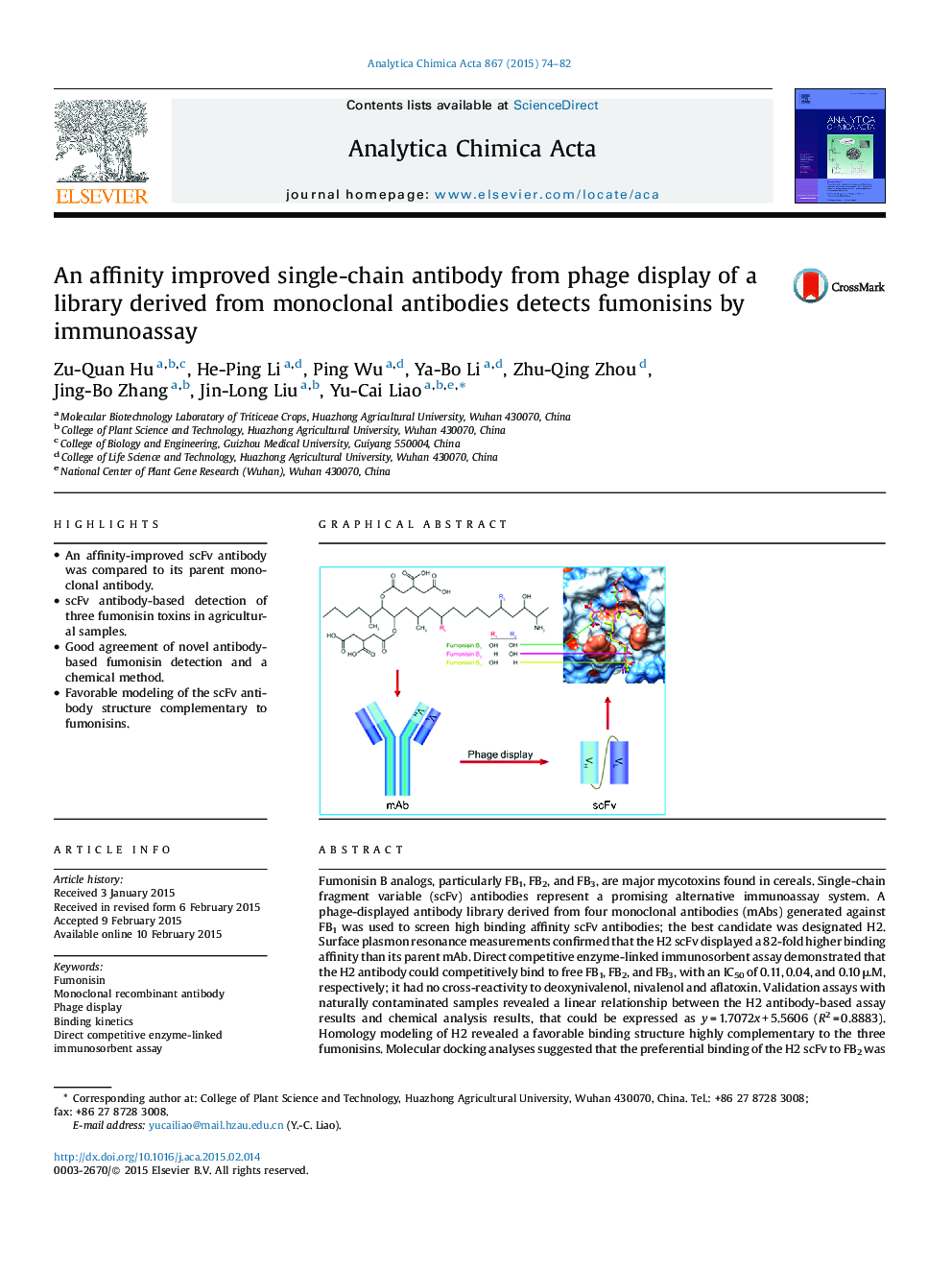| Article ID | Journal | Published Year | Pages | File Type |
|---|---|---|---|---|
| 1163634 | Analytica Chimica Acta | 2015 | 9 Pages |
•An affinity-improved scFv antibody was compared to its parent monoclonal antibody.•scFv antibody-based detection of three fumonisin toxins in agricultural samples.•Good agreement of novel antibody-based fumonisin detection and a chemical method.•Favorable modeling of the scFv antibody structure complementary to fumonisins.
Fumonisin B analogs, particularly FB1, FB2, and FB3, are major mycotoxins found in cereals. Single-chain fragment variable (scFv) antibodies represent a promising alternative immunoassay system. A phage-displayed antibody library derived from four monoclonal antibodies (mAbs) generated against FB1 was used to screen high binding affinity scFv antibodies; the best candidate was designated H2. Surface plasmon resonance measurements confirmed that the H2 scFv displayed a 82-fold higher binding affinity than its parent mAb. Direct competitive enzyme-linked immunosorbent assay demonstrated that the H2 antibody could competitively bind to free FB1, FB2, and FB3, with an IC50 of 0.11, 0.04, and 0.10 μM, respectively; it had no cross-reactivity to deoxynivalenol, nivalenol and aflatoxin. Validation assays with naturally contaminated samples revealed a linear relationship between the H2 antibody-based assay results and chemical analysis results, that could be expressed as y = 1.7072x + 5.5606 (R2 = 0.8883). Homology modeling of H2 revealed a favorable binding structure highly complementary to the three fumonisins. Molecular docking analyses suggested that the preferential binding of the H2 scFv to FB2 was due to the presence of a hydrogen radical in its R1 position, leading to a proper electrostatic matching and hydrophobic interaction. The H2 scFv antibody can be used for the rapid, accurate, and specific detection of fumonisin contamination in agricultural samples.
Graphical abstractFigure optionsDownload full-size imageDownload as PowerPoint slide
